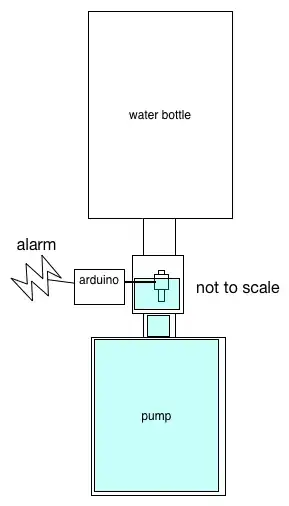Lasers
If your blue water bottles are like mine, they are transparent.
Here's what I would try first:
I would get a cheap laser, and shine the light horizontally through the bottle.
I would aim the laser through a short chord -- not pointed directly through the middle of the bottle; perhaps 1/8 turn to the left of center.
-------
L../.......\..........S1
/ \
| o | S2
\ /
\ /
-------
top-down view
When the bottle is empty, the laser beam will shoot pretty much straight through the bottle -- I would put one photo-sensor S1 there.
When the bottle is not quite empty, the laser beam will bend (refract) -- for redundancy, I would put another photo-sensor S2 there.
As long as the Arduino sees the laser hitting S2 alone, there's still some water in the bottle, at least up to the level of the laser -- turn on the green light.
Anything else -- light detecting only at S1, or nothing detected at either sensor, or light detected at both sensors (yes, it can happen) -- something doesn't seem right, better have the Arduino turn off the green light and turn on the red light.
I would start with the simplest thing that could possibly work.
If I'm lucky, it might work.
If not, there's lots of little tricks involved in getting the light where you want it to go.
There's also lots of tricks for blocking sunlight, etc. from going where you don't want it to go.
Little black tubes, red plastic filters,
pulsing the laser at a few kHz,
collimating lenses,
lock-in amplifiers, etc.
There seem to be lots of tutorials that describe how to detect a laser using Arduino -- see
(This would probably work just as well with a medium-power LED or "infrared LED" and some careful optical focusing and alignment. But -- lasers!)
